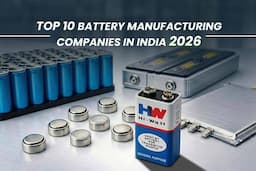Procurement plays a crucial role in delivering cost savings and driving business success. And with over 70% of surveyed CPOs[1] expecting procurement risk levels to remain elevated for the foreseeable future, investing in automating P2P processes has become a necessity.
Procure to pay (P2P) processes enable businesses to document their complex supply chains right from need-based order placement to final payments, affording greater visibility, enhanced operational efficiency, and improved supplier relationship management.
In this article, we will outline all that falls under the ambit of P2P solutions and how automating them can help create streamlined supply chains and resilient organizations.
Understanding Procure to Pay (P2P)
Alternatively called purchase to pay, procure to pay (P2P) is a systemic process involving the decision to procure goods, making purchase requisitions, accounting for them, and paying the suppliers. It aims to align and integrate the procurement and accounts payable functions of an organization to allow for superior supply chain management. It includes the following components/stages:
- Requisition: Based on the business needs, a purchase requisition order is made for the identified product to various suppliers.
- Contract Management: After selecting a suitable supplier, they are sent a formal purchase order. Conversely, suppliers share their invoices with the business.
- Invoice Approval: Once the products are received, the company matches the order against the invoice and approves it if no discrepancies are found.
Payment: The accounts payable team processes the invoice and releases the payment.
The Need to Automate Procure-to-Pay Processes
As the P2P process has several touchpoints, it is prone to inefficiencies, delays, backlogs, and repetition. A poorly designed procure-to-pay process can escalate costs due to inconsistent/late payments, resource wastage for manually meeting unforeseen bottlenecks, and supplier payment disputes.
Poor P2P visibility also raises regulatory and tax compliance issues, further damaging the organization’s credibility. So, by automating and optimizing their workflow using procure-to-pay software, businesses can control maverick spending, improve purchase efficiencies, and make their supply chains intelligent and agile.
Benefits of Procure-to-Pay (P2P) Automation
Technological advances such as robotic process automation (RPA), machine learning (ML), artificial intelligence (AI), and the like are transforming the way P2P processes are run. By analyzing historical trends to automate procurement and improving supplier selection, they are yielding massive cost savings–as corroborated further by over 40% of CPOs[2] vying to invest in procurement automation, such as procure-to-pay software. The key benefits of procure-to-pay optimization are as follows:
- Complete Visibility: End-to-end P2P automation entails maintaining a complete record of purchases, orders, and payments, which reveals data optimization opportunities, enhances supply chain visibility and transparency, and helps identify and resolve major disruptions.
- Reduces Costs: By deploying procure-to-pay software, companies can improve their forecasting and spend management, avoiding expensive spot buys. Automating P2P processes also helps organizations identify suitable suppliers, enabling better price negotiation. Consistent payments also reduce overall processing times and afford opportunities for availing discounts.
- Enhanced Efficiency: Procure-to-pay optimization reduces the scope for human errors caused by siloed databases and workflow systems. It centralizes procurement and payable processes, thereby streamlining workflows, improving financial accuracy, and enhancing efficiency.
- Prevents Frauds: As procure-to-pay software follows strict invoice matching and supplier selection rules, it helps minimize frauds like diverging significantly from existing prices for immediate purchases or granting contracts to unqualified vendors due to personal relationships.
- Better Supplier Relationships: Procure-to-pay software automates invoice and payment processing, ensuring suppliers can check their invoice status in real-time and get paid on time, further improving supplier management.
Embrace Moglix’s P2P Automation Solutions to Unlock Business Resilience
Moglix’s procurement solutions, such as P2P automation, serve as the backbone of resilient businesses, empowering them to navigate procurement challenges with agility and efficiency. Moglix has already helped India’s largest cement manufacturer achieve a massive 20% increase in efficiency by automating its P2P processes, thus reducing purchase requisition to purchase order times. Download the case study for more details or learn more about Moglix’s solutions.




